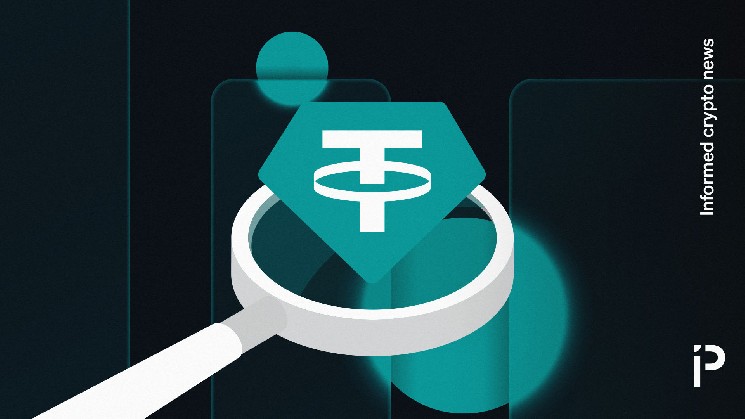The challenge in accounting for Tether reserves

Accurately accounting for Tether’s reserves is a challenge, even (or perhaps especially) for Tether itself. Twitter user Jay Pinho recently published a website that attempts to track the value of the assets backing Tether to gain some insight into their solvency. It also allows you to tweak the composition to see how that affects the performance.
However, due to Tether’s commitment to remaining as opaque as possible, accurately making this assessment can really only be done by someone with full access to its books.
As of its last assurance, Tether’s reserves are split between four self-described categories:
- Cash and cash equivalent, other short-term-deposits, and commercial paper
- This category is further subdivided into:
- US treasury bills
- Commercial paper and certificates of deposit
- Money market funds
- Cash and bank deposits
- Reverse repurchase agreements
- Non-US treasury bills
- This category is further subdivided into:
- Corporate bonds, funds, and precious metals
- Other investments
- Secured loans
In order to understand how Tether values these assets, we need to turn to statements in its most recent Consolidates Reserves Report. Broadly, it values the first category which includes ‘cash and cash equivalents’ at their notional value. Pinho’s website values US treasury bills at their market price, contributing to some of the perceived insolvency of Tether.
Tether transparency: A lesson in lying
Tether, on the other hand, seems to value these assets at their notional value, considering them short-term debt. However, even this category remains somewhat murky, due to including ‘reverse repurchase agreements’ which Bloomberg previously was unable to find an explanation for.
Other assets in Tether’s reserves are even harder to accurately price from the outside. For example, Tether appears to value secured loans at amortized cost, since it believes the assets collateralizing them are sufficiently liquid and valuable. Pinho, however, settles on using an index of corporate bonds to try to assess this category.
Tether has announced its intention to eliminate secured loans from its reserves and we have no insight into what corporate bonds, funds, and precious metals it owns. The company’s ‘other investments’ category allows even less insight, though it likely still contains bitcoin. It’s also unclear if it contains Tether’s venture capital portfolio.
Among the challenges in accurately assessing Tether is that its own statements seem untethered from reality. Tether claims that it updates its transparency page every day, but the amount of quarantined tethers listed for Omni chain has been wrong for years, undercounting the total amount of frozen tethers.
Tether currently lists $32,303,805.00 in quarantined tethers, but there are at least $37,384,625 in frozen tethers on that chain, including:
- $354,645 at 3H5JTt42K7RmZtromfTSefcMEFMMe18pMD
- $3,100,000 at 13TASu2eYYRn9PfrMZyfwBJFryoV2oqj7m
- $30,950,000 at 16tg2RJuEPtZooy18Wxn2me2RhUdC94N7r
- $940,000 at 1PU73xR1fiRj1t3S44LtYiLqAr17tRcwfp
- $2,039,980 at 13K5cZHvDBR4Me39PLFS3JaPdaJocm8ygf
As Pinho accurately points out, Tether maintains a small cushion of assets over liabilities, and it’s remarkably stable — except on days when new assurances are released and it will change suddenly. This is hard to understand when Tether claims to update the page every day.
Tether’s own accounting notes suggest that it values many of these credit-based assets at an amount “less than any expected credit losses.” However, Tether’s assurances since March 31, 2022 state that the firm uses a ‘going concern basis of accounting.’ This is highlighted as requiring “significant management judgement with regards to the Group’s liquidity market and credit risks.”
Read more: Tether abandons commercial paper in favor of US Treasuries
The company also highlights that “no provision for expected credit losses was identified.” It further notes that Tether is currently a defendant in legal cases and that “no provision was recognized.”
Presumably, Tether feels that if any of those challenges come to pass, the approximately $250 million in shareholder capital cushion will be adequate to manage it. However, that’s a tiny percentage of its total $66 billion in assets.
Until Tether is willing to provide greater clarity about the composition of its reserves, it’s nearly impossible to accurately assess the firm’s solvency.
Protos has reached out to Tether with questions about its reserves and will update if we hear back.






 Bitcoin
Bitcoin  Ethereum
Ethereum  Tether
Tether  USDC
USDC  TRON
TRON  Dogecoin
Dogecoin  Cardano
Cardano  Bitcoin Cash
Bitcoin Cash  Chainlink
Chainlink  LEO Token
LEO Token  Monero
Monero  Stellar
Stellar  Zcash
Zcash  Litecoin
Litecoin  Hedera
Hedera  Dai
Dai  Cronos
Cronos  OKB
OKB  Tether Gold
Tether Gold  Ethereum Classic
Ethereum Classic  KuCoin
KuCoin  Gate
Gate  Algorand
Algorand  Cosmos Hub
Cosmos Hub  VeChain
VeChain  Dash
Dash  Tezos
Tezos  Stacks
Stacks  TrueUSD
TrueUSD  IOTA
IOTA  Basic Attention
Basic Attention  Decred
Decred  Theta Network
Theta Network  NEO
NEO  Synthetix
Synthetix  Qtum
Qtum  Ravencoin
Ravencoin  0x Protocol
0x Protocol  DigiByte
DigiByte  Zilliqa
Zilliqa  Nano
Nano  Holo
Holo  Numeraire
Numeraire  Siacoin
Siacoin  Waves
Waves  Ontology
Ontology  Enjin Coin
Enjin Coin  Status
Status  BUSD
BUSD  Pax Dollar
Pax Dollar  Hive
Hive  Lisk
Lisk  Steem
Steem  Huobi
Huobi  NEM
NEM  OMG Network
OMG Network  Augur
Augur  Bitcoin Gold
Bitcoin Gold  Ren
Ren